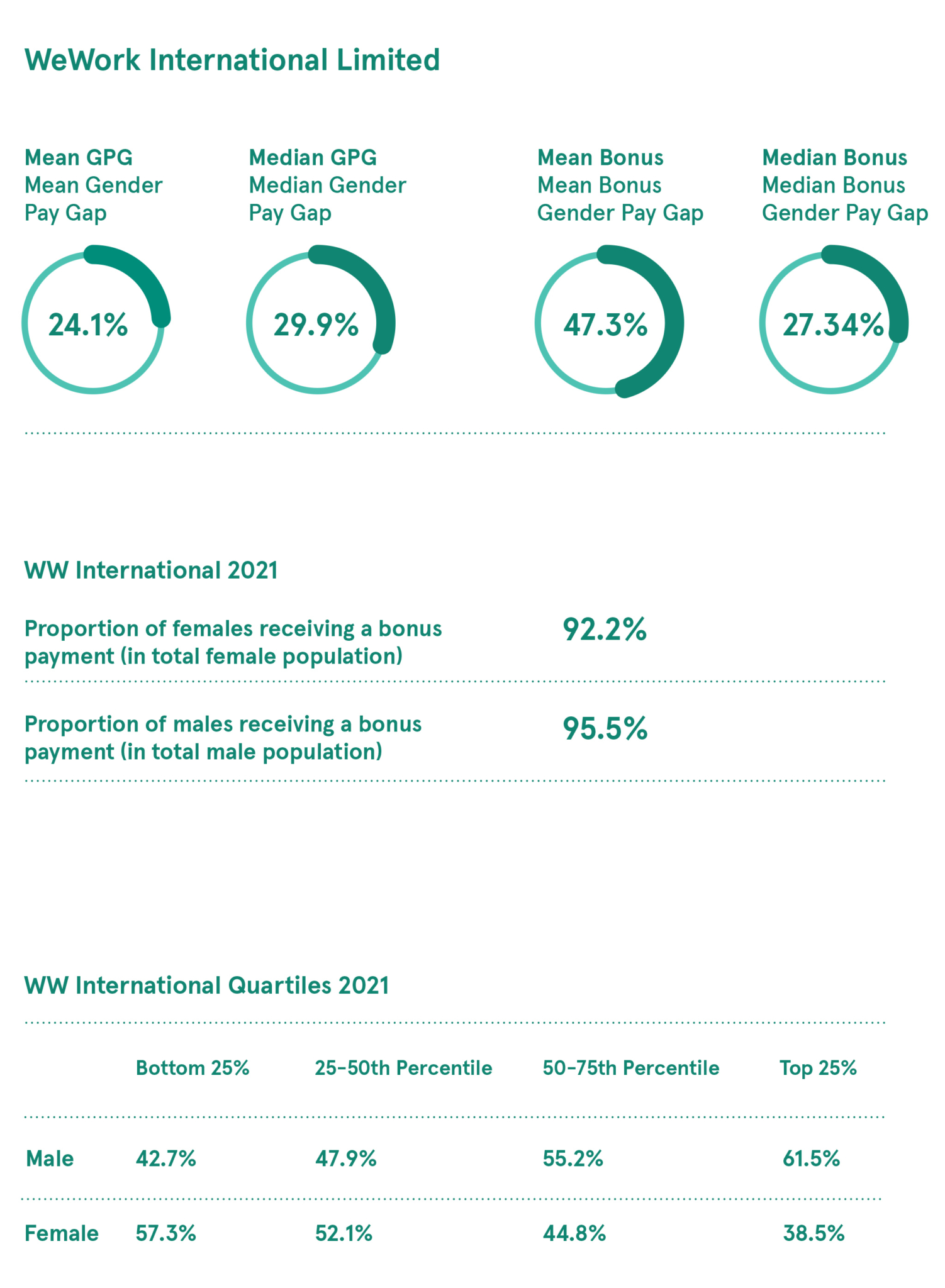UK Gender Pay Gap Report WeWork 2021
At WeWork, we strive to be a place where every individual is given the opportunity to advance through a meaningful and rewarding career. We are committed to ensuring that all employees have the same access to senior roles and gender pay gap data helps us understand where we can identify areas to improve.
Overview
This report provides our Gender Pay Gap results for 2021 for WeWork International Limited, which employs our UK-based HQ teams, including leadership supporting the International region.
Measuring the pay gap
The UK defines the gender pay gap as the difference between men’s and women’s average pay across an organisation, expressed as a percentage. It is determined by comparing the average pay for all men with the average pay for all women, without accounting for different roles, tenure, experience, location or performance. A positive percentage indicates the extent to which women earn, on average, less per hour than their male counterparts and a negative percentage indicates the extent to which women earn, on average, more per hour than their male counterparts. The closer the percentage is to zero, the smaller the pay or bonus gap. The median pay gap is the difference in the midpoints in men’s and women’s hourly pay expressed as a percentage of the midpoint of men’s hourly pay.
The UK Government outlines its employer’s reporting guidance here.
The gender pay gap is distinct from equal pay, which refers to paying men and women equally for doing the same or equivalent work. WeWork takes the concept of equal pay for equal work very seriously.
Our Results for 2021

Our mean gender pay gap of 24.1% is an improvement on our 2020 figure of 30.2%. Our mean bonus pay gap of 47.3% is also an improvement from 69.7% in 2020. However, our results continue to be impacted by a greater number of men in more senior, higher paying roles than women.
Our Commitments
We continue to take steps to close our gender pay gap by removing barriers and creating an environment that encourages and enables female employees to succeed, whatever their career ambitions. These actions include:
- Supporting female colleague’s career path planning to grow into senior positions in our organisation. This year we created and launched a leadership programme, designed to identify and support the growth of our high potential employees; this programme in 2022 has a higher proportion of females to males.
- A recruiting system that supports a fair hiring and selection process, ensuring that a diverse candidate pool is sourced and considered, and that each interview panel is diverse.
- Continuing to promote our Employee Community Group (ECG) ‘Women of We’ – an internal network to raise awareness of potential gender barriers and, to support and empower individuals to be heard and to drive impactful positive changes.
The information and data provided in this report is accurate and in line with the requirements of the Gender Pay Gap Reporting Regulations.
Mathieu Proust, General Manager UK, Ireland & Emerging Markets